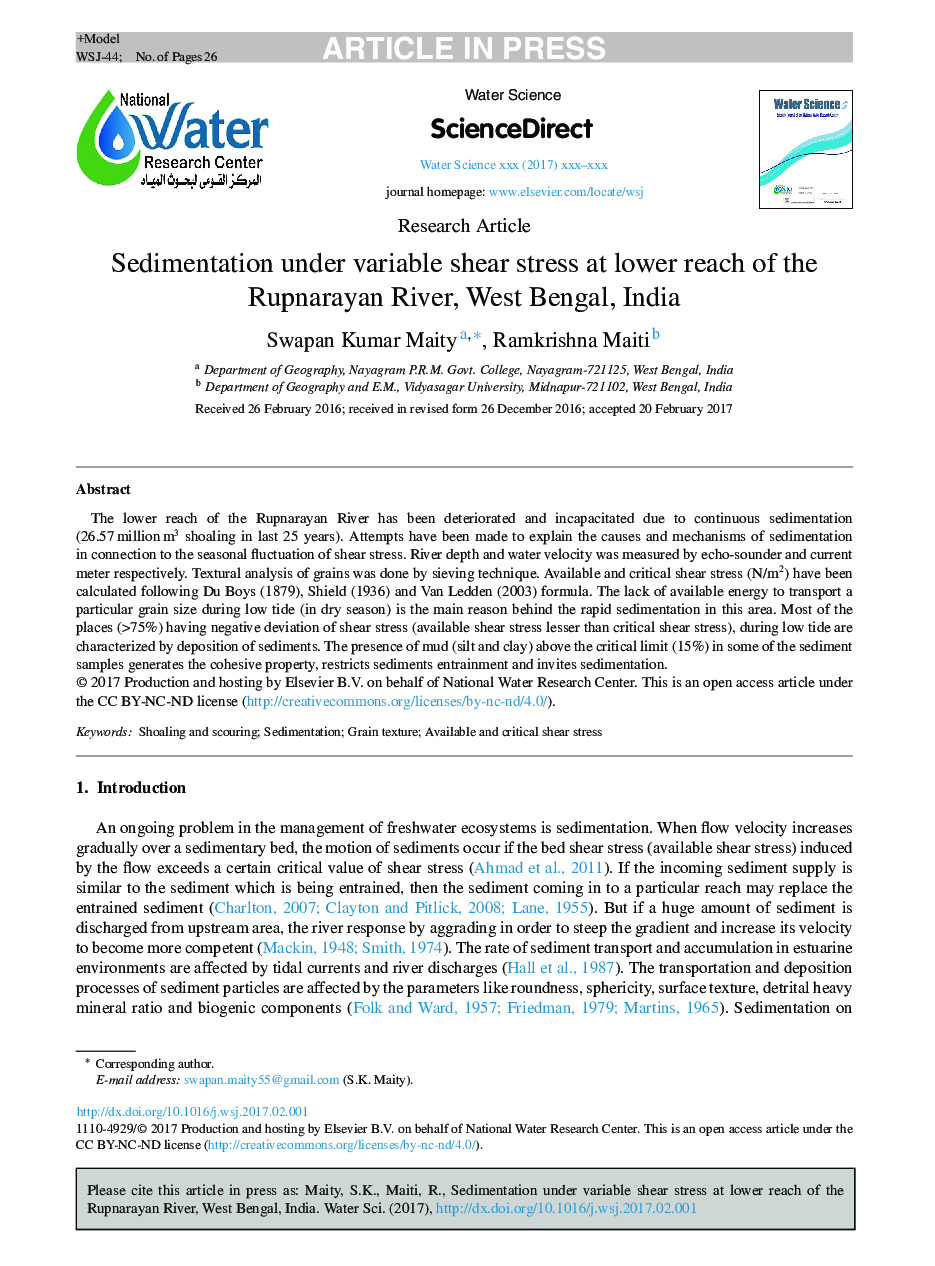| Article ID | Journal | Published Year | Pages | File Type |
|---|---|---|---|---|
| 7228461 | Water Science | 2017 | 26 Pages |
Abstract
The lower reach of the Rupnarayan River has been deteriorated and incapacitated due to continuous sedimentation (26.57 million m3 shoaling in last 25 years). Attempts have been made to explain the causes and mechanisms of sedimentation in connection to the seasonal fluctuation of shear stress. River depth and water velocity was measured by echo-sounder and current meter respectively. Textural analysis of grains was done by sieving technique. Available and critical shear stress (N/m2) have been calculated following Du Boys (1879), Shield (1936) and Van Ledden (2003) formula. The lack of available energy to transport a particular grain size during low tide (in dry season) is the main reason behind the rapid sedimentation in this area. Most of the places (>75%) having negative deviation of shear stress (available shear stress lesser than critical shear stress), during low tide are characterized by deposition of sediments. The presence of mud (silt and clay) above the critical limit (15%) in some of the sediment samples generates the cohesive property, restricts sediments entrainment and invites sedimentation.
Keywords
Related Topics
Physical Sciences and Engineering
Engineering
Engineering (General)
Authors
Swapan Kumar Maity, Ramkrishna Maiti,
